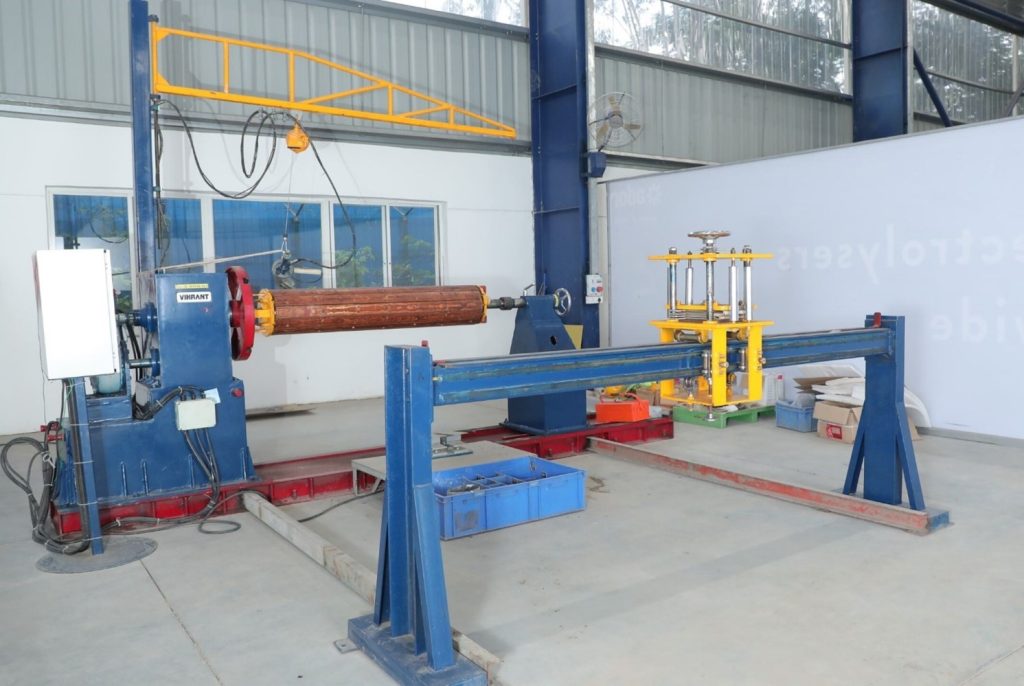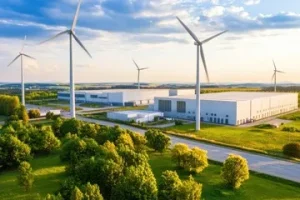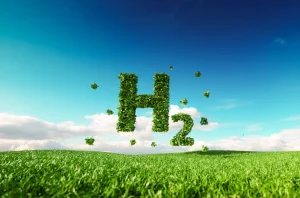What Is a Converter Transformer? Role in HVDC and Industrial Power System
In the ever-evolving world of high-voltage power transmission and heavy-duty industrial processes, converter transformers play a pivotal role. Whether it’s enabling bulk energy transfer over vast distances or powering complex systems like electrolysers and furnaces, these transformers sit at the core of high-efficiency power conversion.
From HVDC (High Voltage Direct Current) systems to industrial power applications, a converter transformer acts as the backbone, ensuring that voltage levels are appropriately adjusted and rectification processes operate seamlessly. But what exactly is a converter transformer, and how does it differ from standard transformers?
In this blog, we will explore the function, design, and critical role of converter transformers, with a special focus on rectifier transformers used in green hydrogen and industrial environments.

Why Converter Transformers Are More Than Just Hardware
When people think about converter transformers, they often picture a big piece of electrical equipment sitting quietly in a substation or industrial plant. But in reality, these transformers are active problem-solvers in the power system. They don’t just transfer energy—they adapt it, protect it, and fine-tune it so it can be used efficiently and reliably. In HVDC transmission projects, a converter transformer for HVDC ensures high-voltage AC is converted into a perfectly matched DC stream for loss-minimised long-distance transmission. In industrial power systems, industrial rectifier transformers deliver rock-solid DC power to critical processes like electrolysis, aluminium smelting, and large-scale green hydrogen production. Without them, modern grids and factories would face massive efficiency losses and operational risks.
Choosing the Right Converter Transformer for Your Application
Not all converter transformers are created equal. The design, insulation system, winding configuration, and cooling method can drastically affect performance and lifespan. For example, a converter transformer for green hydrogen power conversion must handle high currents continuously, with minimal downtime, while suppressing harmonics that could interfere with sensitive electrolyser systems. In HVDC converter stations, they must withstand extreme voltage stresses and bi-directional power flow without overheating. This is why partnering with experts who understand your specific application is essential. The right industrial rectifier transformer is not just a piece of equipment—it’s a long-term investment in efficiency, safety, and sustainability for your power infrastructure.
1. What Is a Converter Transformer?
A converter transformer is a specialised type of power transformer designed to connect AC networks to power electronic converters, such as those used in HVDC transmission systems or industrial rectification processes.
Unlike conventional transformers, which simply step voltage levels up or down, converter transformers must handle the unique demands of high harmonic content, rapid switching, and bi-directional power flow, all while ensuring insulation integrity under complex voltage stress.
2. Role in HVDC Transmission Systems
In HVDC systems, converter transformers enable the transformation of high-voltage AC (HVAC) to DC via a converter station, which often includes rectifier transformers and inverters. Here’s how they contribute:
- Voltage Adaptation: They match the voltage levels between the AC grid and the converter system.
- Insulation and Isolation: Converter transformers provide galvanic isolation between systems for safety and operational control.
- Suppression of Harmonics: By using specific winding connections (like Y/Y or Y/Δ), they help suppress certain harmonic frequencies and minimise grid disturbance.
- Withstanding Stress: They are engineered to endure high electromagnetic and thermal stress caused by DC converter operation.
Without converter transformers, efficient long-distance transmission via HVDC wouldn’t be possible, especially not in the reliable, loss-minimised format modern grids demand.
3. Converter Transformers in Industrial Applications
Beyond transmission lines, converter transformers are equally crucial in industrial power systems. Industries that rely on large-scale electrochemical or metallurgical processes, such as aluminium smelting, electrolysis, or steel manufacturing—depend heavily on rectifier transformers.
These transformers supply high currents at controlled voltages to the rectifier units, which then convert AC to DC for processes requiring stable, ripple-free currents.
For example, in green hydrogen production, where water is split into hydrogen and oxygen via electrolysis, rectifier transformers deliver precise, high-current DC power to keep electrolyser systems running efficiently.
4. Design Characteristics and Challenges
A converter transformer must address specific technical challenges:
- Robust Insulation Systems: To withstand transient voltages and harmonics.
- Multi-Winding Designs: Often include tertiary windings for filtering or voltage balancing.
- Cooling Requirements: Due to higher heat dissipation, they often incorporate forced oil or air cooling systems.
- Noise and Vibration Reduction: Special construction techniques help reduce mechanical stresses and audible noise.
The goal is always the same: maximum reliability, efficiency, and safety under demanding conditions.
5. Why Rectifier Transformers Matter in Hydrogen and Heavy Industry
Rectifier transformers are the unsung heroes behind many industrial processes, acting as a bridge between grid-supplied AC and process-specific DC power.
Their role in green hydrogen production is especially significant:
- They feed the rectifier units that supply electrolysers with stable DC.
- They help maintain power quality by mitigating harmonic interference.
- They are key to system scalability, making them vital as hydrogen demand grows worldwide.
Without the precision of rectifier transformers, many industrial energy conversion systems would falter in performance and reliability.
Global Innovations
Leading companies and technical communities such as Hitachi ABB Power Grids and Hitachi Energy China continue to drive global advancements in HVDC technology, emphasizing the role of converter transformers in large-scale, efficient power transmission. These industry leaders collaborate across markets to improve system reliability and integration with modern energy infrastructure.
Forums and engineering platforms like edaboard.com and mikrocontroller.net provide valuable discussions on converter transformer design, grid challenges, and system efficiency. Technical distributors such as WE Online and industrial directories like Metoree offer key product data, helping professionals compare components used in industrial-scale HVDC and energy conversion systems. Referencing insights from these sources enriches the knowledge base around HVDC deployment in real-world applications.
In Essence
Whether it’s delivering power to vast HVDC grids or fueling electrolysers in green hydrogen plants, converter transformers are at the heart of high-efficiency energy systems. Their ability to convert, isolate, and regulate high-voltage AC for precise industrial and transmission needs makes them a cornerstone of modern power infrastructure.
Power with Precision, Choose YonderH2
At YonderH2, we design more than just solutions, we engineer trust. With cutting-edge expertise in rectifier transformers, electrolyser integration, and high-performance energy systems, we are here to supercharge your green hydrogen mission.
Electricity is needed and vital in everyday life, powering everything from houses to heavy industry initiatives. Efficient electricity transmission over long distances and managing industrial power loads require specialized equipment. One critical part of these assignments is a converter transformer.

But what is a converter transformer? And what is its role in HVDC and industrial power systems?
Let’s dive in!
Understanding Converter Transformer
A converter transformer manages power conversion systems’ unique requirements, especially in High-Voltage Direct Current (HVDC) systems. It can endure high stresses generated by switching operations and harmonic currents common in power conversion processes.
These transformers connect AC (Alternating Current) grids to DC (Direct Current) transmission lines. They transform voltage levels and manage fluctuations caused by switching and rectification processes. Converter transformers ensure efficient, stable, and reliable power transmission by performing this crucial task.
Role in HVDC Power Systems
High-voltage Direct Current (HVDC) efficiently transfers significant amounts of electricity over extended stretches. Compared to conventional AC transmission, it remarkably lowers energy losses. Converter transformers play a critical role in HVDC systems. They act as a bridge, connecting the AC and DC systems.
In an HVDC system, electricity from an AC grid must pass through a converter transformer before converting to DC. The converter transformer steps up or down voltage levels, adjusting the AC input to the proper voltage needed for conversion. After conversion to DC, electricity crosses efficiently over lengthy distances and then passes again via another converter transformer at the receiving end, converting back to AC for customer distribution.
These transformers are specially engineered to manage severe electrical stresses and heat generated in HVDC systems, ensuring smooth operation, fewer outages, and reduced maintenance costs.
Beyond converter transformers, the growth of renewable energy also highlights the importance of hydrogen electrolysers, especially the widely used alkaline electrolyser and the innovative PEM electrolyser. Technologies like alkaline and PEM electrolysers can optimize energy efficiency and help purify industrial functions.
Role in Industrial Power Systems
Converter transformers are essential in long-distance power transmission and play a substantial part in industrial structures. Steel plants, chemical plants, aluminium smelters, and railway system industries often employ high-power conversion methods, demanding intense and dedicated electrical parts.
In industrial applications, converter transformers handle increased harmonic currents, which generate power quality problems, voltage instabilities, electrical disturbances, and abnormalities in the electrical supply. They also supply critical voltage adjustments, protecting pricey equipment against power surges and guaranteeing smooth, uninterrupted operations.
For example, big factories and production teams usually have weighty machinery and motor-driven tools that need regular and correct voltage levels. Converter transformers offer accurate voltage control, increase efficiency, enhance equipment longevity, and assure worker safety.
Benefits of Converter Transformers
- Elevated Efficiency: They decrease power failures, assuring efficient conversion and transmission.
- Durability and Trustworthiness: Created robustly to manage electrical stresses and harmonic disturbances, decreasing downtime and maintenance.
- Flexibility: Appropriate for various applications, from HVDC transmission to weighty industrial usage.
- Cost Savings: Lower energy loss translates to significant operational savings over time.
In Essence
Converter transformers are essential to current electrical infrastructure because they affect efficiency, dependability, and security. The converter transformer’s contribution is invaluable.
Partner with experts who understand converter transformers’ complexities to ensure your HVDC and industrial power systems run smoothly and efficiently.





